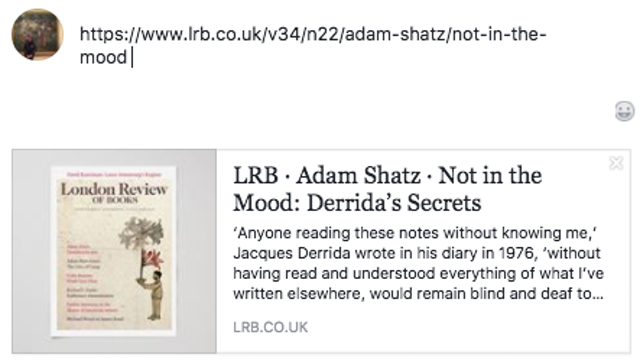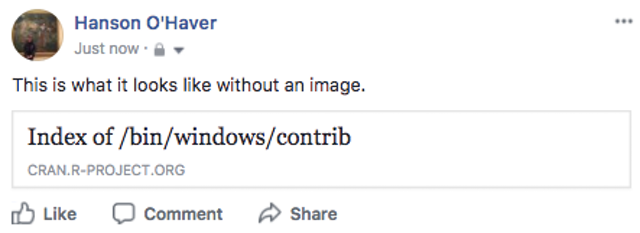Not every article needs an illustration.
- Transfer
Forcing illustrations into every online article is a stupid practice.
Pictures and text often complement each other well. You have an article about something, and the picture shows this thing and in many cases helps to better understand it. But the web no longer adheres to this logic, because at some point it was decided that illustrations were necessary for absolutely all texts. It could be a celebrity remotely relevant. Stock photo of a man with some kind of facial expression. Sony logo, which is just the word SONY. I thought for a long time and came to the conclusion that this is stupid. I understand that the principle of “picture → clicks” is holy for the industry, but it seems that some publishers have lost their self-esteem. If a picture is worth a thousand words, then it’s hard for me to understand what is the value of the article, illustrated by stock photography.
As in many other problems, the main fault seems to be on social networks. Until the mid or late 2000s, the main source of trafficfor individual articles was the main page of the site. These pages are usually mimicked under the front pages of newspapers. There, the main articles - those that are worth the waste of time to create original art illustrations - were accompanied by pictures. Other articles had only a headline. Over time, the infinite size of the Internet has lowered the bar on which articles deserve artistic illustrations, but still not every article has been accompanied by the CAP.
Then Facebook and Twitter changed the industry in the traditional sense of “things got worse.” Now, if a user published an article on his site, then a thumbnail was used as a preview. If the article didn’t have this, social media still used something to their taste - usually a distorted version of the site’s logo or some extraneous image from the same page, for example, a small copy of the image for another article. If the social media site could not find any picture at all, it displayed only the title. Websites are afraid that they look unprofessional - or, even worse, boring - and lose potential clicks. Even the fucking "Economist" now publishes a picture in every article on its website.
I think this is completely optional. If I read the news about what Donald Trump is a cruel and insensitive slug, I do not need to see his photo. If there is any new picture that gives an additional context about what he did new to destroy our future, then put it without question. Otherwise, I already know what he looks like.
Even worse are articles on Facebook. Trump's photos are at least ridiculous, and Mark Zuckerberg just forever looks like a cousin of Justin Timberlake, who served in the Red Army. However, like Trump, Facebook is struggling to destroy everything that’s good, so Zuckerberg often appears in the news. And every time news sites have to put his photo at the beginning of the article. Because the article without illustrations inconceivable, web sites feel the need to load even a single photo of Mark in the same T-shirt on a blue background, for fear that you have to just publish the Facebook logo.

This is how the preview looks if there is no illustration in the article, so Facebook pulls another image from somewhere on the page. Illustration: Hanson O'Haver / The Outline
For crime stories, the practice is even more disturbing. There is some strange dissonance in how new articles about Harvey Weinstein [Hollywood star accused of sexual harassment - approx. trans.] are still accompanied by his photographs on the red carpet. What purpose do these illustrations serve? At the moment, everyone already knows what he looks like. I suppose we should look at him and think: “So this is what the accused of sexual crimes looks like.”
Of course, most inappropriate illustrations are not too terrible. Photo of an office park in a business article. Or cars in an article on traffic. Or a woman with a salad laughing alone .
The unwavering belief that people will not read articles without pictures is incompatible with logic. Of course, an interesting illustration may attract readers, but most of these pictures are uninteresting. And even if it’s a little better for business, is the compromise worth it? The situation is reminiscent of supermarkets with huge lines, because few cashiers work; Yes, theoretically it’s more profitable, but you have to pay for it with a terrible atmosphere.

This is what happens if Facebook cannot find which image to insert. Illustration: Hanson O'Haver / The Outline
I do not blame the bad editors for choosing these photos, because what else can they do? They were told to find something. If you edited articles for digital media, you probably spent some time scanning the Getty Images or Shutterstock collections, or (accept my condolences) the Creative Commons section on Flickr. This deadly mission serves as a reminder that we are all ultimately content farmers involved in commercial activities. But is it possible to use for something else the time spent searching for these images - not to mention the cost of their licenses?
Adults do not need pictures to help read. I understand that the refusal to post illustrations at the beginning of each article at first glance seems like a very serious step, but as soon as a few bold sites do this, others will quickly follow suit. Posting a general photo of a mobile phone in an article on mobile phones is simply offensive. For clarity: I am not an iconoclast. Pictures can serve as an excellent complement to the article; the problem is that now it has become mandatory practice. Not every article needs an illustration.
Pictures and text often complement each other well. You have an article about something, and the picture shows this thing and in many cases helps to better understand it. But the web no longer adheres to this logic, because at some point it was decided that illustrations were necessary for absolutely all texts. It could be a celebrity remotely relevant. Stock photo of a man with some kind of facial expression. Sony logo, which is just the word SONY. I thought for a long time and came to the conclusion that this is stupid. I understand that the principle of “picture → clicks” is holy for the industry, but it seems that some publishers have lost their self-esteem. If a picture is worth a thousand words, then it’s hard for me to understand what is the value of the article, illustrated by stock photography.
As in many other problems, the main fault seems to be on social networks. Until the mid or late 2000s, the main source of trafficfor individual articles was the main page of the site. These pages are usually mimicked under the front pages of newspapers. There, the main articles - those that are worth the waste of time to create original art illustrations - were accompanied by pictures. Other articles had only a headline. Over time, the infinite size of the Internet has lowered the bar on which articles deserve artistic illustrations, but still not every article has been accompanied by the CAP.
Then Facebook and Twitter changed the industry in the traditional sense of “things got worse.” Now, if a user published an article on his site, then a thumbnail was used as a preview. If the article didn’t have this, social media still used something to their taste - usually a distorted version of the site’s logo or some extraneous image from the same page, for example, a small copy of the image for another article. If the social media site could not find any picture at all, it displayed only the title. Websites are afraid that they look unprofessional - or, even worse, boring - and lose potential clicks. Even the fucking "Economist" now publishes a picture in every article on its website.
I think this is completely optional. If I read the news about what Donald Trump is a cruel and insensitive slug, I do not need to see his photo. If there is any new picture that gives an additional context about what he did new to destroy our future, then put it without question. Otherwise, I already know what he looks like.
Even worse are articles on Facebook. Trump's photos are at least ridiculous, and Mark Zuckerberg just forever looks like a cousin of Justin Timberlake, who served in the Red Army. However, like Trump, Facebook is struggling to destroy everything that’s good, so Zuckerberg often appears in the news. And every time news sites have to put his photo at the beginning of the article. Because the article without illustrations inconceivable, web sites feel the need to load even a single photo of Mark in the same T-shirt on a blue background, for fear that you have to just publish the Facebook logo.

This is how the preview looks if there is no illustration in the article, so Facebook pulls another image from somewhere on the page. Illustration: Hanson O'Haver / The Outline
For crime stories, the practice is even more disturbing. There is some strange dissonance in how new articles about Harvey Weinstein [Hollywood star accused of sexual harassment - approx. trans.] are still accompanied by his photographs on the red carpet. What purpose do these illustrations serve? At the moment, everyone already knows what he looks like. I suppose we should look at him and think: “So this is what the accused of sexual crimes looks like.”
Publishing a shared photo of a mobile phone in an article on mobile phones is simply offensive
Of course, most inappropriate illustrations are not too terrible. Photo of an office park in a business article. Or cars in an article on traffic. Or a woman with a salad laughing alone .
The unwavering belief that people will not read articles without pictures is incompatible with logic. Of course, an interesting illustration may attract readers, but most of these pictures are uninteresting. And even if it’s a little better for business, is the compromise worth it? The situation is reminiscent of supermarkets with huge lines, because few cashiers work; Yes, theoretically it’s more profitable, but you have to pay for it with a terrible atmosphere.

This is what happens if Facebook cannot find which image to insert. Illustration: Hanson O'Haver / The Outline
I do not blame the bad editors for choosing these photos, because what else can they do? They were told to find something. If you edited articles for digital media, you probably spent some time scanning the Getty Images or Shutterstock collections, or (accept my condolences) the Creative Commons section on Flickr. This deadly mission serves as a reminder that we are all ultimately content farmers involved in commercial activities. But is it possible to use for something else the time spent searching for these images - not to mention the cost of their licenses?
Adults do not need pictures to help read. I understand that the refusal to post illustrations at the beginning of each article at first glance seems like a very serious step, but as soon as a few bold sites do this, others will quickly follow suit. Posting a general photo of a mobile phone in an article on mobile phones is simply offensive. For clarity: I am not an iconoclast. Pictures can serve as an excellent complement to the article; the problem is that now it has become mandatory practice. Not every article needs an illustration.
